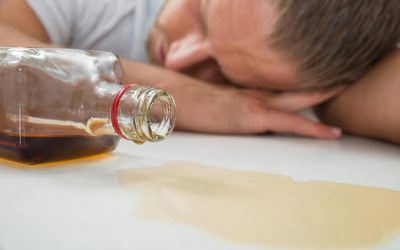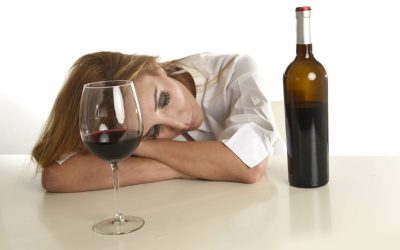In this stage, reward circuits become blunted because of within-system neuroadaptations. The brain’s stress systems, including corticotropin releasing factor and norepinephrine in the central amygdala and bed nucleus of the stria terminalis, become increasingly dysregulated because of between-system compensatory neuroadaptations. At this point in the addiction process, subjective negative affect predominates, especially during periods of sobriety and withdrawal. This later alcohol rehab stage of addiction marks a shift from impulsive use driven by positive reinforcement to compulsive use driven by negative reinforcement. In this stage, compulsive substance use is aimed, in part, at decreasing the negative affect caused or aggravated by the allostatic reset in the brain’s stress and mood systems.
The Integrated Approach
Irritability affects 40-60% of individuals with alcohol-induced anxiety disorder. It is often linked to the brain’s response to the sudden absence of alcohol, causing mood swings and emotional instability. The depletion of neurotransmitters like serotonin and dopamine, which regulate mood, can lead to frustration and short tempers.
Treatment & Support
As recently reviewed in the literature, some interesting data also support a possible relationship between longstanding anxiety or depressive disorders and alcoholism (Kushner et al. 1990; Kushner 1996). The most consistent results relate to manic episodes, wherein manic-depressive patients show a small but significant increased risk for alcoholism (Winokur et al. 1993). Other data also suggest a greater-than-chance association between panic disorder (and perhaps social phobia) and alcoholism (Cowley 1992; Cox et al. 1990; Kushner 1996). Patients with alcohol-use disorders (AUDs) have a high prevalence of anxiety disorders (AnxDs). “Co-occurring disorders” refers to the coexistence of an AUD and/or drug related disorders with another non-addictive psychiatric disorder. The aim of this study was to assess the effectiveness of psychopharmacological treatments and psychotherapy in patients with AUD and AnxD and to propose recommendations for the treatment of patients with comorbid AnxDs and AUDs.

Share this article
The inference made from the study’s results goes beyond scholarly curiosity; it establishes the foundation for further investigations and the development of customised policies aimed at reducing does alcohol give you anxiety the mutually reinforcing dangers of alcohol consumption and anxiety disorders. People with AUD have a heightened risk for depressive disorders, which are the most common co-occurring psychiatric disorders for this population. AUD and depressive disorders appear to share some behavioral, genetic, and environmental risk factors, yet these shared risks remain poorly understood.

Comorbid AnxD and AUD Psychotherapeutic Interventions Considerations
- Although the prevalence of anxiety among the population is 6.7%, literature reviewers have pointed out that there is no clear correlation between anxiety from first drunkenness and heavy drinking 36.
- Anxiety sensitivity also has been linked to the incidence of both anxiety and substance use disorders (DeHaas et al. 2001; DeMartini and Carey 2011; Schmidt et al. 2007).
- For example, can individuals with AUD be distinguished meaningfully based on objective stress reactivity and regulation indicators, and do subjective anxiety symptoms mark or moderate this distinction?
- Restlessness is especially common during early alcohol withdrawal when the body adjusts to the absence of alcohol.
For example, societal attitudes towards alcohol and mental health can vary significantly affecting how individuals perceive and respond to anxiety and their alcohol consumption habits. For instance, in some cultures, alcohol use may be deeply ingrained in social traditions, which can normalise consumption even in situations where individuals are experiencing anxiety. Conversely, in societies where alcohol use is heavily stigmatised or regulated, individuals might adopt different coping mechanisms, potentially obscuring the relationship between alcohol consumption and anxiety disorders.
It works by increasing serotonin levels, which improves mood and reduces anxiety. Sertraline is a selective serotonin reuptake inhibitor (SSRI) commonly prescribed for anxiety and depression. It works by increasing serotonin levels in the brain, which helps regulate mood and reduce anxiety. This section initiates significant major discoveries made using the empirical method.
It’s not uncommon for people with anxiety disorders to use alcohol as a form of self-medication. But over https://ecosoberhouse.com/ time, this can lead to increased tolerance, dependence, and worsening anxiety. In fact, studies show that people with anxiety disorders are more likely to develop alcohol use disorder (AUD), and vice versa.
As a typical depressant, alcohol affects the brain in many ways, and it is likely that high doses will cause feelings of sadness (i.e., depression) during intoxication that evolve into feelings of nervousness (i.e., anxiety) during the subsequent hangover and withdrawal. The greater the amounts of alcohol consumed and the more regular the intake, the more likely a person will be to develop temporary anxiety and depressive symptoms. As consumption increases even more, these symptoms also are likely to intensify. Compared side by side, these proposed causal models provide competing explanations for the joint development of anxiety disorders and AUDs. It is apparent that the collective findings in this area do not unequivocally point to one pathway or exclude another. It is unclear whether this is a result of a failure of the aforementioned theoretical models or of the methods used to test the pathways or if it simply reflects the complexity inherent within this comorbidity.
